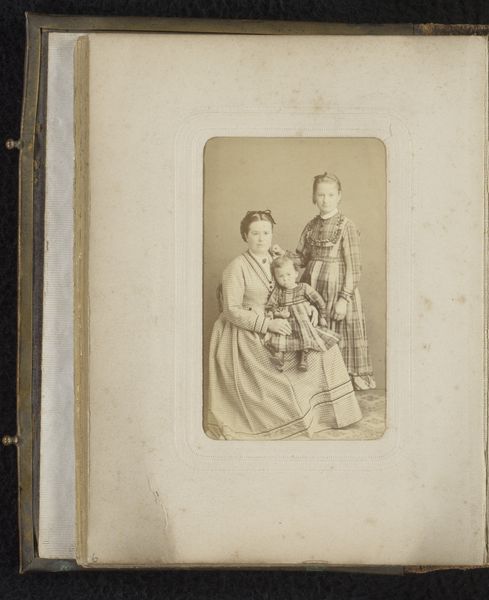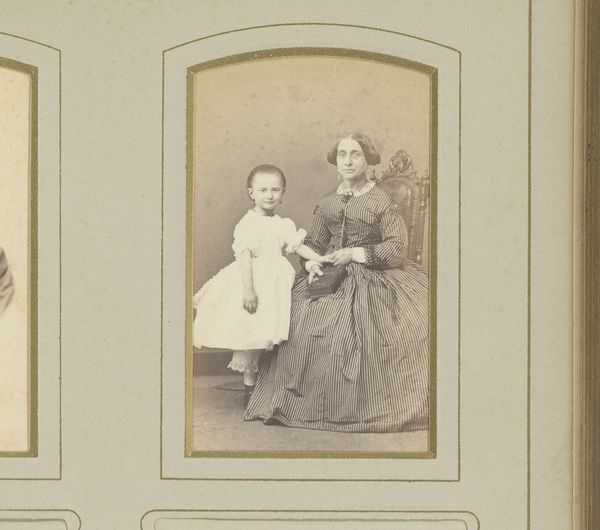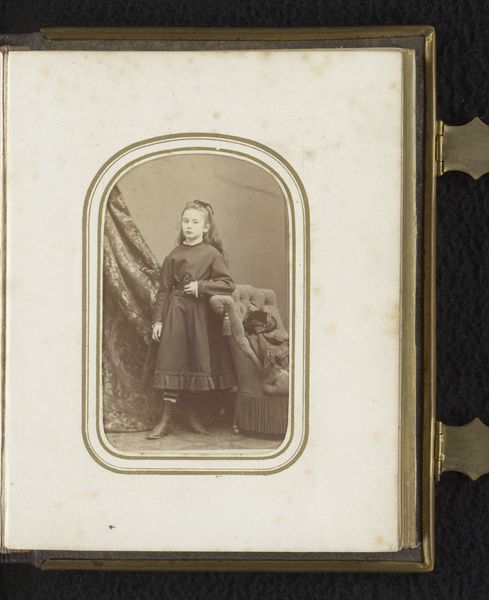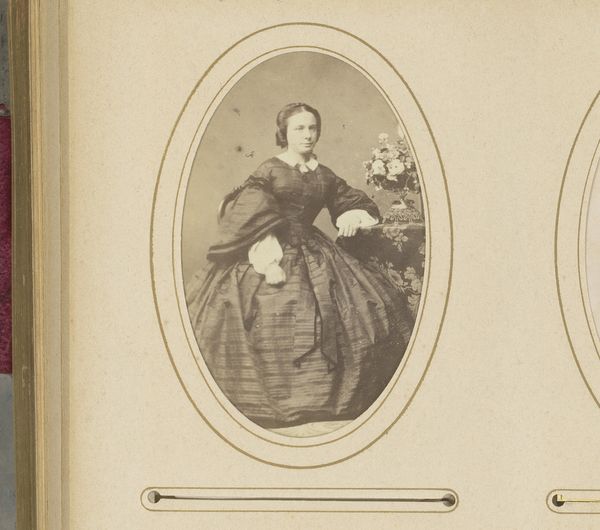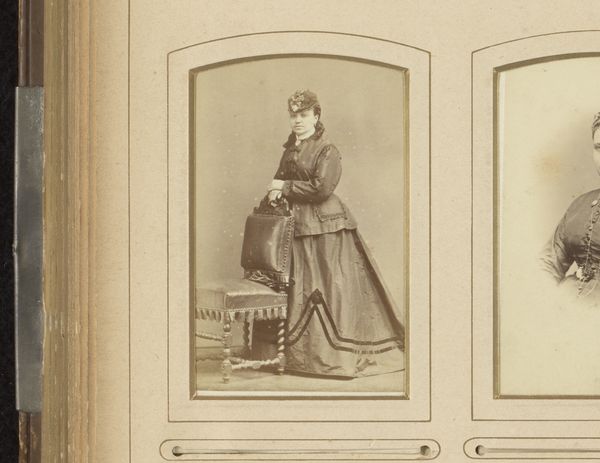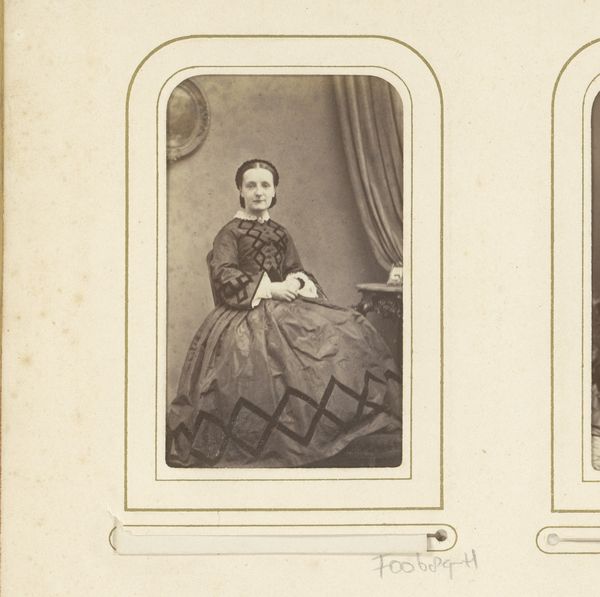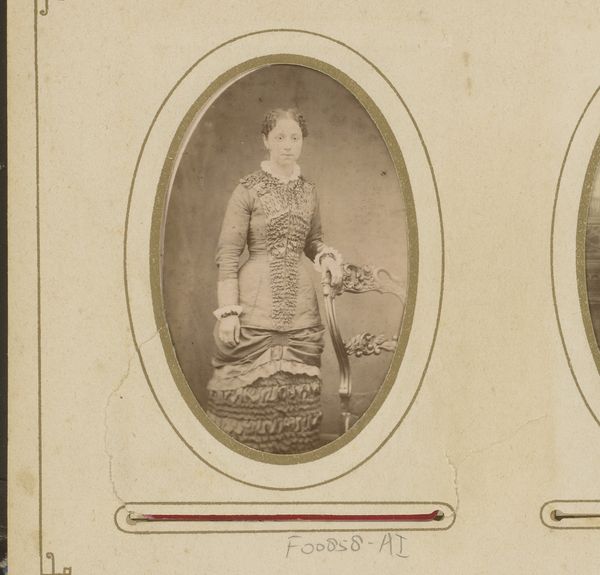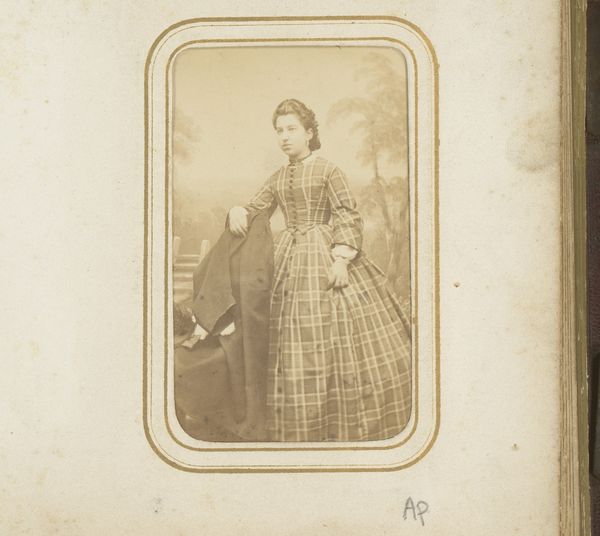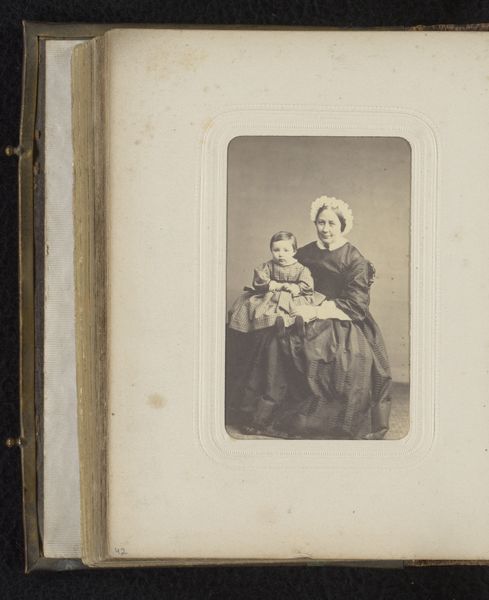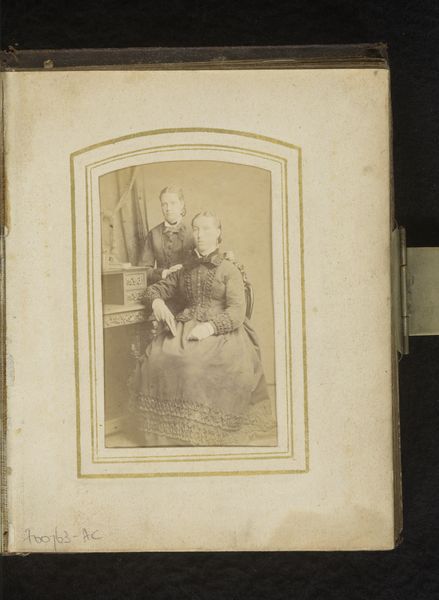
photography, gelatin-silver-print
#
portrait
#
book
#
photography
#
gelatin-silver-print
#
genre-painting
Dimensions: height 85 mm, width 51 mm
Copyright: Rijks Museum: Open Domain
Editor: This is "Portret van een zittende vrouw met boek in de hand," or Portrait of a Seated Woman with Book, taken sometime between 1860 and 1885 by Auguste de Bedts. It's a gelatin-silver print. The subject has a reserved composure. What can you tell us about its place in history? Curator: Well, let’s think about this photograph as an artifact deeply embedded in the social fabric of the 19th century. The rise of photography democratized portraiture, but also standardized certain visual codes. The woman’s attire and posture—that’s no accident. This image speaks volumes about the performative aspects of gender and class in that era. Do you notice how the book almost acts as a prop? Editor: A prop? How so? Curator: Consider its presence. It's held almost formally. It's a visual declaration of her education and social standing, isn't it? And given that photography was becoming more accessible, these images were essential in constructing and circulating social identities. It’s less about capturing reality and more about projecting a carefully curated self-image for public consumption. Editor: So it's about conveying status and adhering to societal expectations more than genuine representation. Curator: Precisely! And this image undoubtedly circulated within a specific social network, reinforcing certain ideas about women, education, and the burgeoning middle class. Seeing this image now gives us insights into how photography was manipulated and used in creating idealized public figures. Editor: I never thought about photography as such a staged and almost political act. It’s made me think about how images still function today. Thanks for that perspective! Curator: My pleasure! Looking at the photograph critically is just a first step, as thinking how they’re shown and shared continues this historical discourse.
Comments
No comments
Be the first to comment and join the conversation on the ultimate creative platform.
